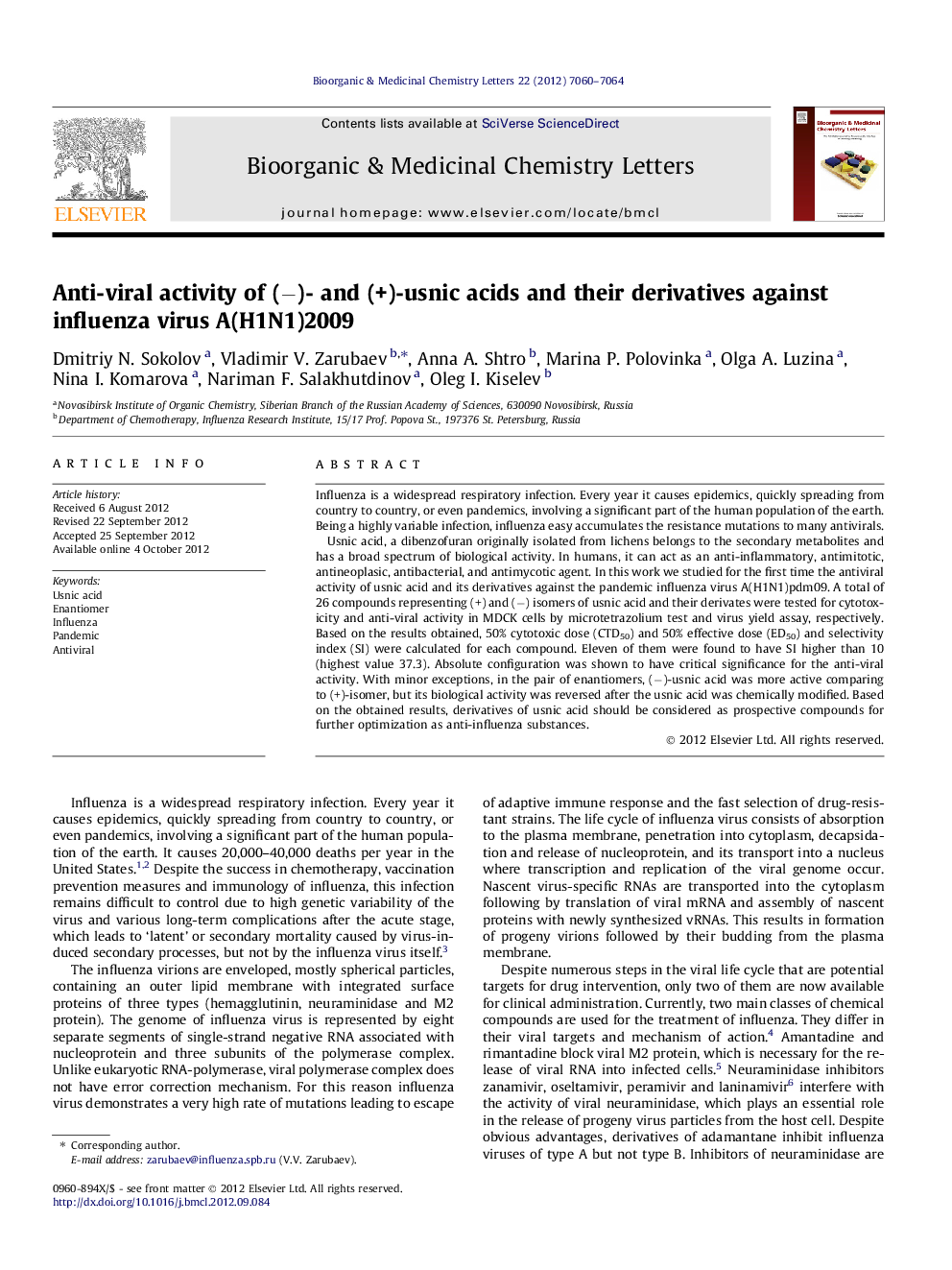| Article ID | Journal | Published Year | Pages | File Type |
|---|---|---|---|---|
| 10594337 | Bioorganic & Medicinal Chemistry Letters | 2012 | 5 Pages |
Abstract
Influenza is a widespread respiratory infection. Every year it causes epidemics, quickly spreading from country to country, or even pandemics, involving a significant part of the human population of the earth. Being a highly variable infection, influenza easy accumulates the resistance mutations to many antivirals.Usnic acid, a dibenzofuran originally isolated from lichens belongs to the secondary metabolites and has a broad spectrum of biological activity. In humans, it can act as an anti-inflammatory, antimitotic, antineoplasic, antibacterial, and antimycotic agent. In this work we studied for the first time the antiviral activity of usnic acid and its derivatives against the pandemic influenza virus A(H1N1)pdm09. A total of 26 compounds representing (+) and (â) isomers of usnic acid and their derivates were tested for cytotoxicity and anti-viral activity in MDCK cells by microtetrazolium test and virus yield assay, respectively. Based on the results obtained, 50% cytotoxic dose (CTD50) and 50% effective dose (ED50) and selectivity index (SI) were calculated for each compound. Eleven of them were found to have SI higher than 10 (highest value 37.3). Absolute configuration was shown to have critical significance for the anti-viral activity. With minor exceptions, in the pair of enantiomers, (â)-usnic acid was more active comparing to (+)-isomer, but its biological activity was reversed after the usnic acid was chemically modified. Based on the obtained results, derivatives of usnic acid should be considered as prospective compounds for further optimization as anti-influenza substances.
Related Topics
Physical Sciences and Engineering
Chemistry
Organic Chemistry
Authors
Dmitriy N. Sokolov, Vladimir V. Zarubaev, Anna A. Shtro, Marina P. Polovinka, Olga A. Luzina, Nina I. Komarova, Nariman F. Salakhutdinov, Oleg I. Kiselev,
